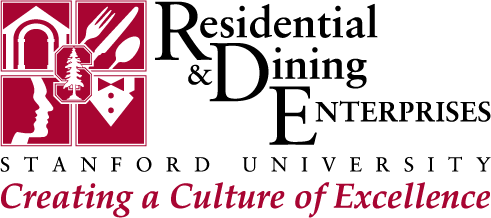
On a recent afternoon, Antonio Gutierrez Segovia (above right) sat in pre-algebra class inside an Arrillaga Family Dining Commons conference room, his mathematical reasoning book cracked. Gutierrez Segovia and his classmates focused intently on a word problem neatly outlined on the white board before them: Two-thirds of Mrs. Jensen’s students passed the exam. If there are 24 total students, how many passed the exam?
Gutierrez Segovia faced this problem after he had already worked an eight-hour day as a custodian in Escondido Village. Still, there was nowhere the 23-year veteran would rather be.
That's because, for the first 17 of his years at the university, Gutierrez Segovia spoke minimal English and worked two jobs while raising six young children. The language barrier with the Stanford students he served was frustrating, as was his inability to help his children with their homework.
So, six years ago, when most of his children were grown, Gutierrez Segovia took an English class through Stepping Stones to Success (SSTS), a Stanford workplace education program created by Residential & Dining Enterprises (R&DE) and designed for entry-level university employees. Today, he is working his way toward earning his General Education Diploma (GED). His wife, Maria, a custodian at Florence Moore, is taking English and computer classes. For many others, SSTS has become a lifeline to a better future.
SSTS was launched in 2003 by Dr. Shirley J. Everett, senior associate vice provost for R&DE. “Lifelong learning is an important part of R&DE culture. One of the ways we show our staff how important they are to our organization is by investing in their professional and personal development,” said Everett. “It is so rewarding to hear from students how SSTS has transformed their lives, and from managers who say the skills our students acquire make them more engaged and productive employees.”
SSTS offers classes in reading, writing, math, arithmetic, language—English, Spanish, Mandarin—grammar, and basic computer skills. Classes include GED and college preparatory courses, as well as certificate programs, such as the Work Readiness Credential. The program also offers life skills workshops. All university staff members, including those who are members of bargaining units, may participate in the program. All classes are STAP-funds eligible.
The driving force behind this program is Dr. Christine Gabali, the program’s director since its inception. Gabali, a Stanford alumna, was resident fellow in Roble Hall, where she saw first-hand the language divide between students and the staff members who served them. Since the inaugural SSTS cohort of 10 students, 300 have participated in one or more SSTS classes. This year, 64 individuals (including 21 Stanford Health Care employees) were acknowledged at an SSTS ceremony and reception on June 1.
For years, Gabali crisscrossed campus Monday through Friday, teaching classes in six locations between 10 a.m. and 6:30 p.m. In October, the program added another instructor, Frank Larteri III, who is also fluent in Spanish and Mandarin. This has allowed the program to reach even more students.

Weekly one-hour classes are timed to coincide with various departments’ 30-minute lunch breaks, with an additional 30 minutes of paid release time provided by the home department.
Gabali said SSTS meets the needs of all types of learners, from the very educated international visiting scholars who would like to improve their English skills, to non-English speakers to those with little to no formal education. Gabali, who speaks six languages, says that one should be cognizant of such a diverse group and customize the curricula.“How can you provide educational material for adults who are from different countries, and who have different needs in terms of education level?” Gabali, who speaks six languages, said the key is customizing the curricula.
“I call it a ‘concierge workplace education,’” she said. “This program really is about investing in our people. Completing these classes gives employees the skills and confidence to help them succeed – on the job and in life.”
For Hilda Pelaez, a 12-year Stanford employee who currently works in housekeeping at the Stanford Hospital, SSTS has been a game changer. Pelaez is earning her GED and attends class every day after work from 4:30-6 pm, a number two pencil tucked into her brown ponytail.
“I am very tired when I finish my work but when I see my teachers, Christine and Frank, I’m very excited,” she said. “They are always patient.”
When the mother of three grown sons speaks about SSTS, she oozes enthusiasm. “Until three years ago, I understood only one word my supervisor said: ‘clean.’ Now I am very proud because I understand my supervisors, the nurses and patients. This program for me is beautiful.”
On Friday afternoons, SSTS students working toward their GEDs can attend an optional tutoring session offered by Stanford students, including Jonathan Sington of the class of 2019. Not long ago, on a glorious spring Friday, Pelaez, Guttierez Segovia and others listened attentively as Sington honed in on decimals and long division.
Sington, who tutors in Spanish, said he finds teaching in the SSTS program more gratifying than being a teaching assistant in undergraduate class.
“For me, classes come first but for them, it’s family, work, commuting here—all of those things. I don’t know who’s going to come —sometimes students have conflicts and can’t make it—but when they do come, they’re always invested. Always. And it’s because they want to be here, they actually just want to learn.”
There is no stopping Gutierrez Segovia, that’s for sure. He hopes to attend college and someday pursue his dream job as an interior designer. But first, he will keep plugging away toward his GED, which means staying up late to study with youngest son Jared, a 9th grader. Gutierrez Segovia admits that sometimes Jared helps him with his homework.
Only now? Dad can return the favor.
